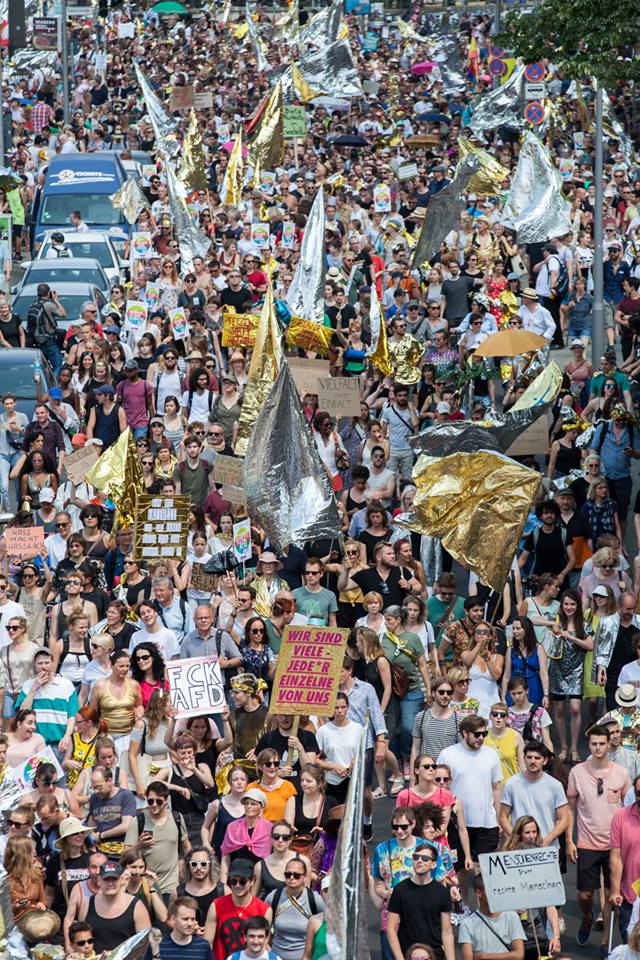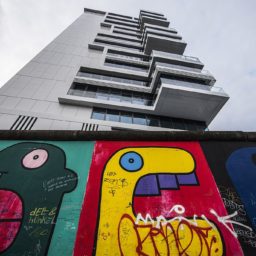Berlin’s museums, theaters, art galleries, and cultural spaces have joined forces in an unprecedented show of solidarity against the rise of right-wing groups across Germany. More than 140 figures representing cultural institutions denounced “illegitimate attempts made by right-wing nationalists to exploit art and cultural events for their own purposes,” in a declaration launched today, November 9.
Representatives from various cultural spheres gathered near the Brandenburg Gate in the center of the German capital to share the document “Berlin Declaration of the Many.” The signatories agreed to 11 calls to action in uniting against right-wing movements.
The Berliner Festspiele, KW – Institute for Contemporary Art, the Berlin Biennale, and Haus der Kulturen der Welt are among many prominent cultural institutions joining forces. The Prussian Cultural Heritage Foundation, which has overall responsibility for Berlin’s State Museums, including the Hamburger Bahnhof, has also signed.
“By attacking cultural institutions as agents of this societal vision, right-wing populism stands in hostile opposition to the art of the many,” states the declaration. “Right-wing groups and parties frequently disrupt events, aim to determine repertoires, polemicize against the freedom of art and above all are working on the re-nationalization of culture.”
The nonprofit association Die Vielen (the Association of the Many), has organized the declaration. A group of Berlin-based artists and various other workers in the cultural field founded the nonprofit last year.
“This is about protecting each other from right-wing propaganda,” artist Raul Walch, a founding member of the initiating group Die Vielen, tells artnet News. “All genres of the art world are coming together to unite for this cause.”
The group unites under a symbolic “flag,” the gold and silver emergency blankets given to refugees. Die Vielen chose it as an international symbol of tolerance, security, and safety for all.
A Symbolic Day in Germany
The date for the declaration signing is highly symbolic on a number of levels. November 9 is the date of the reunification of East and West Germany. However, it is also the anniversary of Kristallnacht (Night of Broken Glass) when in 1938 Nazis burned and destroyed synagogues and attacked Jewish shops and properties.
The date also marks Hitler’s failed Beer Hall “Putsch,” a failed uprising in Munich in 1923. It became a national holiday during Nazi rule. Because Nazi apologists and neo-Nazis now hold gatherings on that day, Germany’s reunification celebrations were moved to earlier in October.
The nationwide campaign also saw declarations signed concurrently in Düsseldorf, Hamburg, as well as Frankfurt and Darmstadt, with cultural institutions from each respective city announcing their support.
One of the 11 commitments signed on by the cultural sites is to actively participate in a demonstration, called the “Glittering Arts and Culture Demonstration,” set to take the May 18, 2019. The number of signatories continues to grow as of publishing time.







